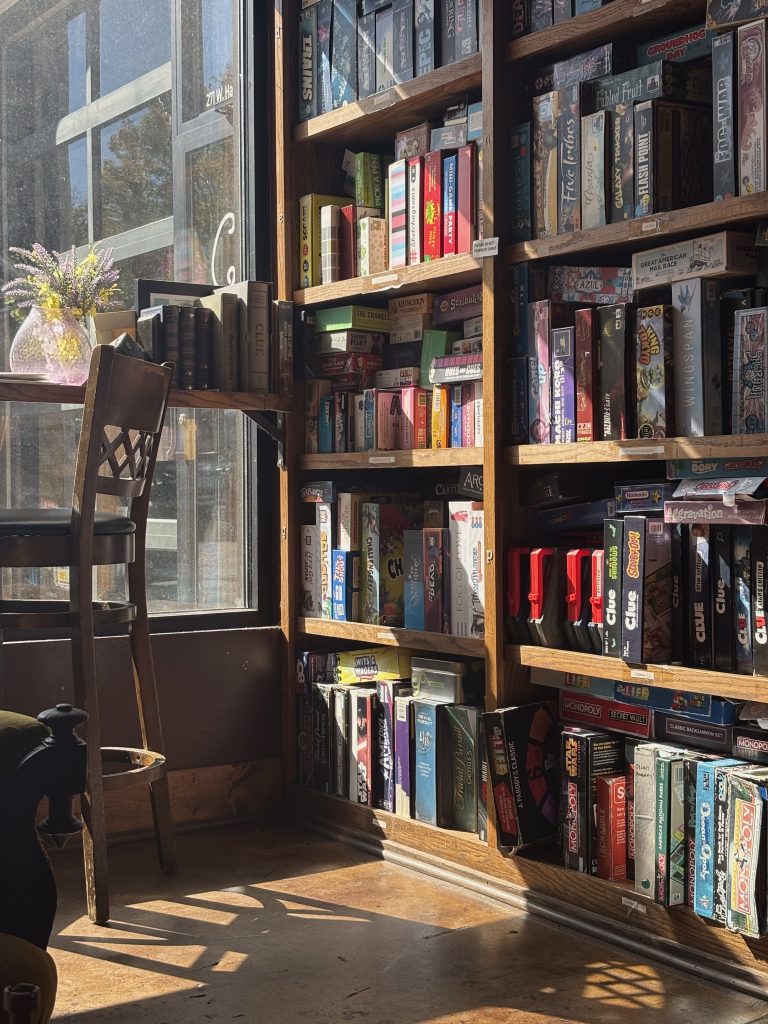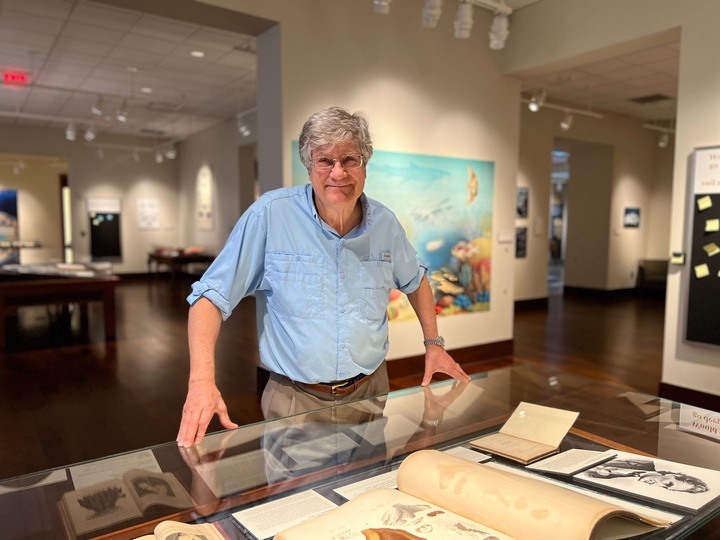
The Rook and Pawn offers a quiet getaway from the bustle of downtown Athens where students can study over a cup of coffee or play a game of Monopoly with friends. (photo/Hannah Freeman)
Tucked in a quiet corner of downtown Athens, The Rook and Pawn may look like any other café.
But inside, the nutty aroma of espresso and old board games fills the air. Shelves line the wall, brimming with colorful game boxes — everything from Candy Land to Carcassonne. Behind the game room and bar, a dimly lit corridor hums with quiet conversation and shuffling cards.
In a city known for its bustling bars and restaurants, The Rook and Pawn has carved out its own niche as a community-driven “third place” where food, play and connection come together.
The idea of a “third place” — a space outside the home and workplace where people gather — was first introduced by sociologist Ray Oldenburg in his book “The Great Good Place.” He defined a third place as a convenient, inexpensive public space where people can socialize with others, typically over food or drinks.
“Third places exist on neutral ground and serve to level their guests to a condition of social equality,” Oldenburg wrote. “Within these places, conversation is the primary activity and the major vehicle for the display and appreciation of human personality and individuality.”
Tim Kelly and his wife, Carrie, opened The Rook and Pawn in 2015 with the idea of a third place in mind. Their goal was to create a café where people could play their favorite board games while enjoying food and drinks — whether with friends, family or on their own.
Since then, the restaurant has become a staple gathering spot for young adults in Athens.
“We wanted a place that would appeal to families during the day,” Kelly said. “At the same time, students could study here, treat it as a coffeehouse and then in the evening, have it sort of transition into a more traditional downtown restaurant/bar.”
With a library of more than 500 board games and a pub-style menu of sandwiches, coffee, cocktails and craft beer, The Rook and Pawn offers a casual atmosphere where everyone from seasoned gamers to curious newcomers is welcome.
“We wanted it to be a celebration of whatever people’s interests were, whether it was games or coffee or food or drinks or just hanging out,” Kelly said. “Everybody was welcomed, everyone, you know, treated the same way.”
Whether stopping by to play a game of chess in between classes or grabbing a drink at night, Kelly said students play an integral role in the daily operations of the café.
“During the day, it can be a lonely place,” Kelly said. “When the students are back, a lot of times they’ll come in and study and get a coffee, and it’s nice just to have that in and out and just have a little bit more vibrancy.”
For many students, The Rook and Pawn serves as a space to build community during a formative time in their lives.
Dawn Robinson, a professor of sociology at the University of Georgia, said third places like The Rook and Pawn are especially valuable for young adults who are navigating independence and shaping who they are.
“Young adults are kind of branching away from their family place in a big way,” Robinson said. “That makes it kind of exciting and important in their lives, because they’re forming new relationships and new identities in those contexts.”
Food, she added, often deepens those connections.
“Food reminds people of some of the warmer memories of family,” Robinson said. “I think food, globally and historically, is an emotionally charged context for enjoying each other’s company.”
Kelly said that sense of comfort is exactly what The Rook and Pawn aims to offer — not just through food, but through the feeling of being at home with others.
“Whether they’re eating or drinking or playing a game or whatever, it’s just like they’re kind of in their living room and they’re hanging out with their friends,” Kelly said. “That’s what we’ve always kind of strived for.”



